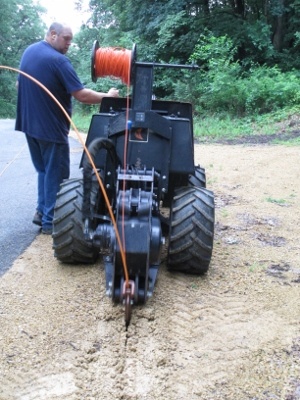 Planning the last 1,000 feet of fiber deployments can resemble a logic puzzle. How do you get a connection from the main network to the premises in a cost-effective way, taking the minimal time, while still protecting fiber, and without disrupting the local environment?
Planning the last 1,000 feet of fiber deployments can resemble a logic puzzle. How do you get a connection from the main network to the premises in a cost-effective way, taking the minimal time, while still protecting fiber, and without disrupting the local environment?
Multiply this by the number of premises in a FTTx rollout and you can easily see how costs and time snowball, making it a complex exercise to plan and implement. This is why the last mile is normally the most expensive and time consuming part of any overall fiber rollout. Cables and ducts have to be strong, flexible, lightweight, and simple to implement if costs and time are to be kept down.
Meeting the challenges
The environment is normally the biggest factor when deploying FTTP solutions, with topology, soil type and existing buildings and roads all impacting how easy it is to deploy to business and consumer premises. Overcoming these obstacles is vital to cost-effectively turning plans into reality.
A recent example shows the last mile complexity of fiber to the premises deployments. A rural operator was looking to deploy fiber to its subscribers, including providing service to a new customer, who had moved out of the city and wanted to run his business from his new home, sharing large image and video files as part of his job as a forensic auditor.
 The challenge was to build the last 1,000 foot section through a path that ran from the customer premises underneath natural vegetation, stonewalls and landscaping without disturbing the area, finishing at a wireless tower 900 feet below.
The challenge was to build the last 1,000 foot section through a path that ran from the customer premises underneath natural vegetation, stonewalls and landscaping without disturbing the area, finishing at a wireless tower 900 feet below.
The first 250 feet of the route was covered in ancient vegetation that could not be disturbed - if you did you would simply never be able to restore it properly. Add in that the route incorporated an 80 foot grade change and seven 90° bends from beginning to end, four of which were in the same seven foot length.
Solving the puzzle
The only solution was to bore under the vegetation, rock walls, stone driveways and streams, leaving an opening for the outer duct, which had to be tough enough to withstand the local environmental conditions and protect fiber cable, yet small enough to fit in a confined space.
As part of the wider fiber deployment the operating company chose m2fx and we worked with the contractor to install our duct and cable in three ways:
-
Deploying the duct in the bore under the first 250 feet of obstacles, without disturbing the surface.
-
Using a vibrating plow to make a small cut in the ground where the remaining duct was placed 16 inches deep. This method meant the first rains would simply remove any physical signs of the installation. Total time for duct deployment was under 15 minutes.
-
Pre-connectorized cable was then initially pushed in for the first 250 feet, and then assisted with air. This made it easier to travel around the 90° bends without problems. Average installation time for cable was 165 feet per minute, with the whole 900 feet run completed in 8 minutes.
Altogether the whole process took less than three hours – lucky, as tornadoes and thunderstorms were on their way, which would have introduced further complexity!
In many ways every fiber installation is the same – you need to get a cable from A to B quickly and efficiently, with the minimum of disruption. But as the example above shows, every job needs to be planned differently and the installation techniques tailored to the individual circumstances. Solving the puzzle requires experience, good partners, access to a wide toolkit of technologies and often a little lateral thinking if you are to bring the benefits of fiber to new subscribers around the world.


